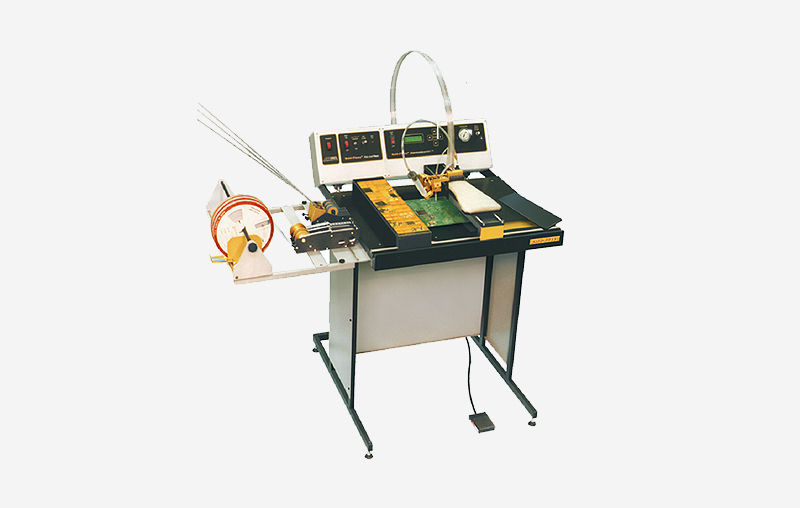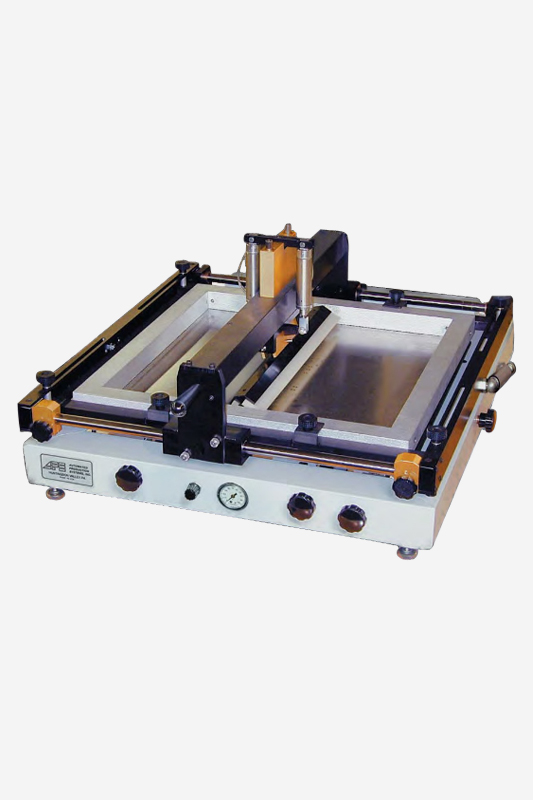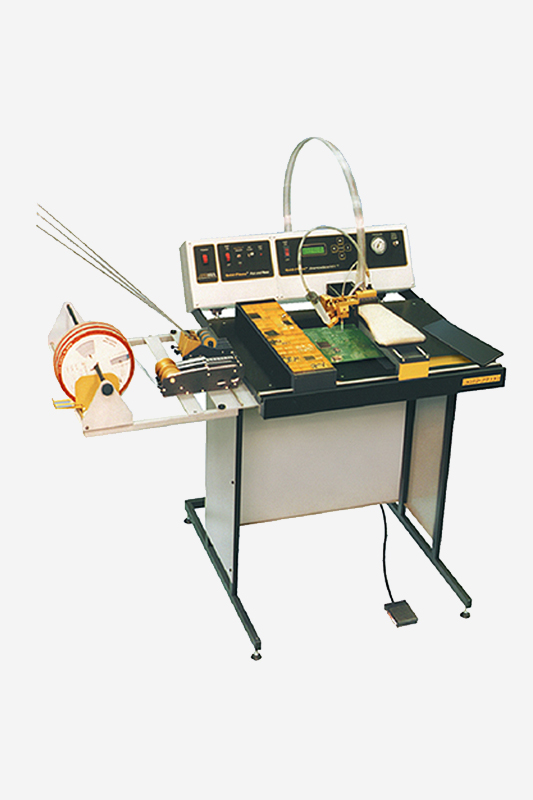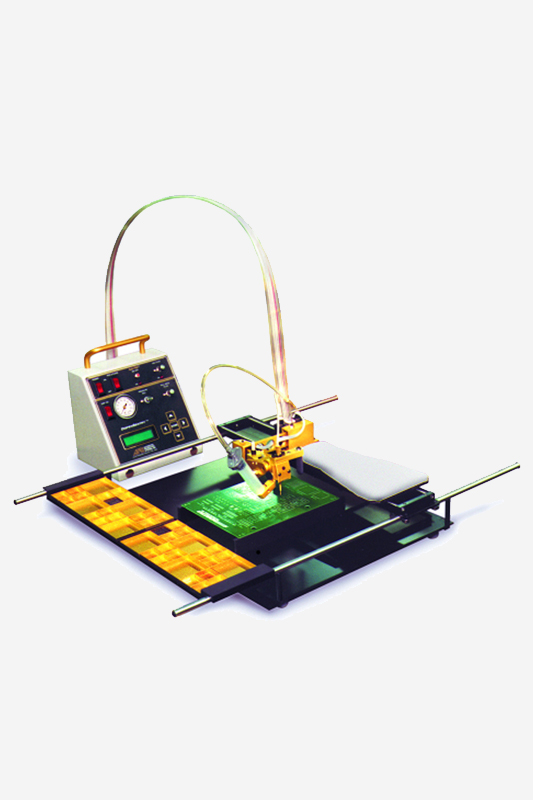Technical capabilities of machines and equipment used in production determine the levels of complexity, precision and efficiency of technological processes achieved, and finally – the quality of products. However, the market success of a product does not only consist of its absolute value, but also, to a large extent, of the quality achieved in relation to price.
Therefore, reducing costs, while maintaining quality criteria, is one of the most important objectives in production planning. Thus, if it is possible to obtain certain parameters and indicators with significantly lower investment costs, it should not be overlooked. A new offer has just appeared on the Polish market, addressed to electronics manufacturers. Its basic distinguishing feature is the combination of high quality and reliability, wide possibilities and very good parameters, with prices unprecedented in this class of equipment.
In the catalogue of this American company we can find instruments and devices designed for preparation and assembly of all electronic components and circuits on printed circuit boards, as well as substrates of hybrid elements with different surfaces and thicknesses (from 0.5 to 4.0 mm).
All of them ensure precision and repeatability of operations, differing primarily in the degree of automation, which translates, on the one hand, into achieved efficiency and, on the other, into the purchase price.
Using DDM products, a number of variants of complete lines can be combined, on which the operations of trimming and shaping the leads of elements and circuits, applying masks, soldering paste and glue on PCBs, placing elements and circuits on PCBs and soldering are performed. Disassembly (repair) and ancillary equipment such as component counters are also available‘.
Pick & place systems and devices
The most technically advanced and probably the most interesting group are pick & place machines, grouped in the „L“ series.
Their main advantages are their versatility and flexibility, precision and speed of operation, as well as the possibility of control from the PC. Belt, strip, tray and optionally vibrating feeders are available to the user. They allow for picking and stacking items such as: 0201, 0402, 0603, 0805, 1206, melf, SO-28 to SO-8, SOT, SOIC, (fine pitch) QFP, BGA, PLCC and many others.
The maximum number of simultaneously working feeders is 32 for the L20, 64 for the L40 and as many as 96 for the L60; these values refer to a 8 mm belt feeder. Four vacuum grippers (eight optional) are installed as standard, powered by the built-in compressor. These are automatically selected during operation, allowing different items to be picked and stacked without the need to interrupt tool change. The position of the component/chip relative to the PCB is controlled by a camera or laser.
The high resolution characteristics of the head movement along the X, Y and Z axes (in the order of 4 µm) and the ability to position the element in any direction with a step of 0.18 µm determine the high positioning precision of ±0.001. (±25.4 µm). L-series machines can operate with a 15 mils (0.384 mm) grid. Their maximum efficiency is up to 4800 cph (chip per hour). The software of the „L“ series is an open, easy-to-use tool that allows for efficient programming and quick modifications. The software can operate autonomously (the device works independently) or can work with other systems, creating a production line with optimal performance.
An interesting feature is also the power supply for the machines – 230V AC, so these advanced systems do not require a separate pneumatic installation. What is the difference between the L20, L40 and L60 models apart from the mentioned maximum number of feeders used simultaneously?
The difference is in the dimensions and weights, which is not the most important, as well as capabilities regarding the maximum dimensions of the handled boards (from 343×305 mm for L20, to 343×813 mm for L60) and prices. However, the latter can be considered attractive en bloc, which, combined with the low cost of use, significantly contributes to lower production costs. If you are planning a slightly smaller scale project, you should consider the DDM P20/P40: they are smaller, lighter, have slightly less advanced parameters.
For example, the maximum performance here is 1500…2500 cph, a positioning accuracy of ±0.005î and a minimum raster of 20 mils. The number of feeders that can work simultaneously is 48 and 80, for P20 and P40 respectively (8 mm belt). As in the L“ series, there are trays and feeders for many types of components. There are also integrated compressors.
The P20/P40 is controlled by a built-in computer, whose software allows for easy data input. Optional translation and transfer of data from CAD programs is possible. The manufacturer states that the number of programs that can be saved is practically unlimited. The range of pick & place systems also includes, among others: – The semi-automatic, small m10 system, equipped with self-learning software that controls, memorizes and reproduces the sequence of actions performed by the operator on the first model circuit.
The operator’s work at this stage is facilitated by the original audio-visual signalling system – the MPP20/21 manual system and the MPP10/11 system, which guarantee precision thanks to the ergonomic design, which always provides the right support for the hand (the device can be quickly moved to left-handed operation).
Versions „21“ and „11“ are equipped with digitally controlled glue or paste dispensers that can work in manual, semi-automatic, automatic and self-learning modes. – The equipment and accessories, such as the MPP-VC system for video inspection or the programmable glue/paste dispenser GDV-20 with SMD tweezers for element positioning.
Template printers
Template printers are represented in DDM offer by five models: from economical SPR-10 handheld printer to self-levelling and automatic SPR-45 printer. Maximum dimensions of the printing area are from 305×380 mm to 406×457 mm. The devices are designed for small and medium volume production, ensuring accuracy, repeatability and reliability of operation. Their important advantage is the possibility of working with foil templates (without frames), which is a potential source of significant savings.
Crimps
At the stage of preparation for the assembly, crimping devices are necessary – devices used for cutting and forming the leads of many elements and systems, especially those intended for the threaded assembly. DDM offers over 30 such devices in manual and automatic versions. There is a possibility to process elements with axial and radial leads (preparation for both horizontal and vertical mounting), as well as systems in double row DIP enclosures.
Reflow ovens
Soldering in the DDM edition is a process that follows a programmed thermal profile, taking place inside one of the four furnaces of the GF“ series currently offered. Heating elements of the furnace (convectional) are located both in the upper and lower part of the chamber, creating heating zones. The chamber is made of stainless steel. Achieving an even temperature distribution in the PCB is ensured by the patented Cyclonic system forcing air (or nitrogen) movement. Properly located thermocouples work with a computer controller. On request, the company will equip the device with infrared radiators – however, this solution is chosen less and less frequently.
The operator is able to observe the process through a large viewing window on the upper wall of the chamber – its interior is illuminated. Just outside the furnace tunnel there is a cooling zone where the last phase of soldering takes place. The plate subjected to the above treatments moves on a wide (305 mm) conveyor. The software allows, among other things, to enter and save up to 100 profiles, program a timer (up to 7 days), monitor and report defects according to ISO9000 SPC, protect the entered data with a password.
Having learned the detailed specifications of the systems and devices described above, you can reliably assess which of them best fit the needs of planned or ongoing production.
The design of the DDM offer is aimed at process optimization and economization of investment steps, and the economical operation and high reliability of the equipment are the next steps in the always desirable direction – cost reduction.



